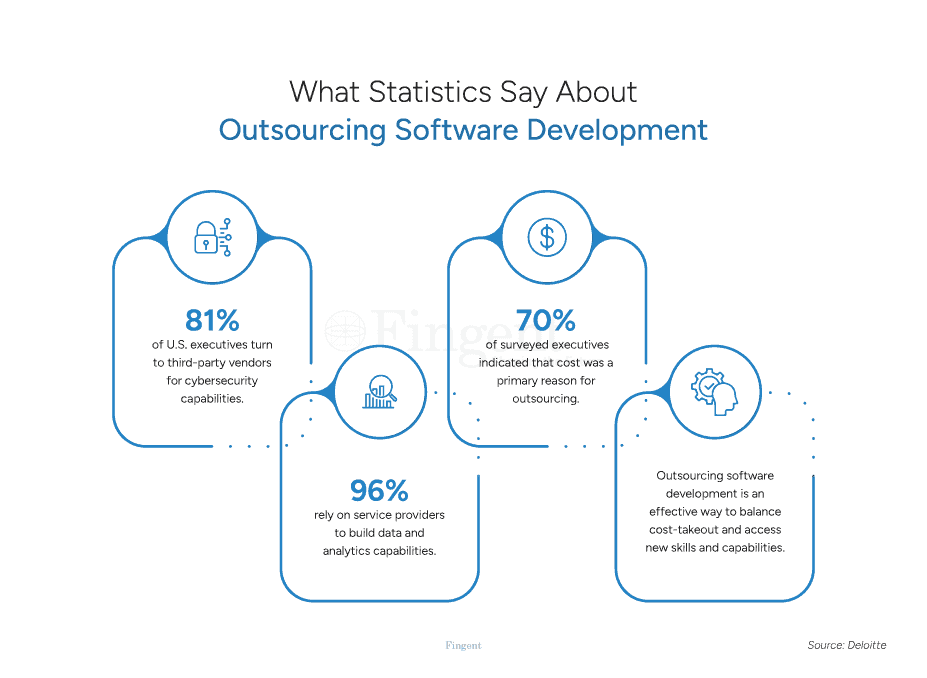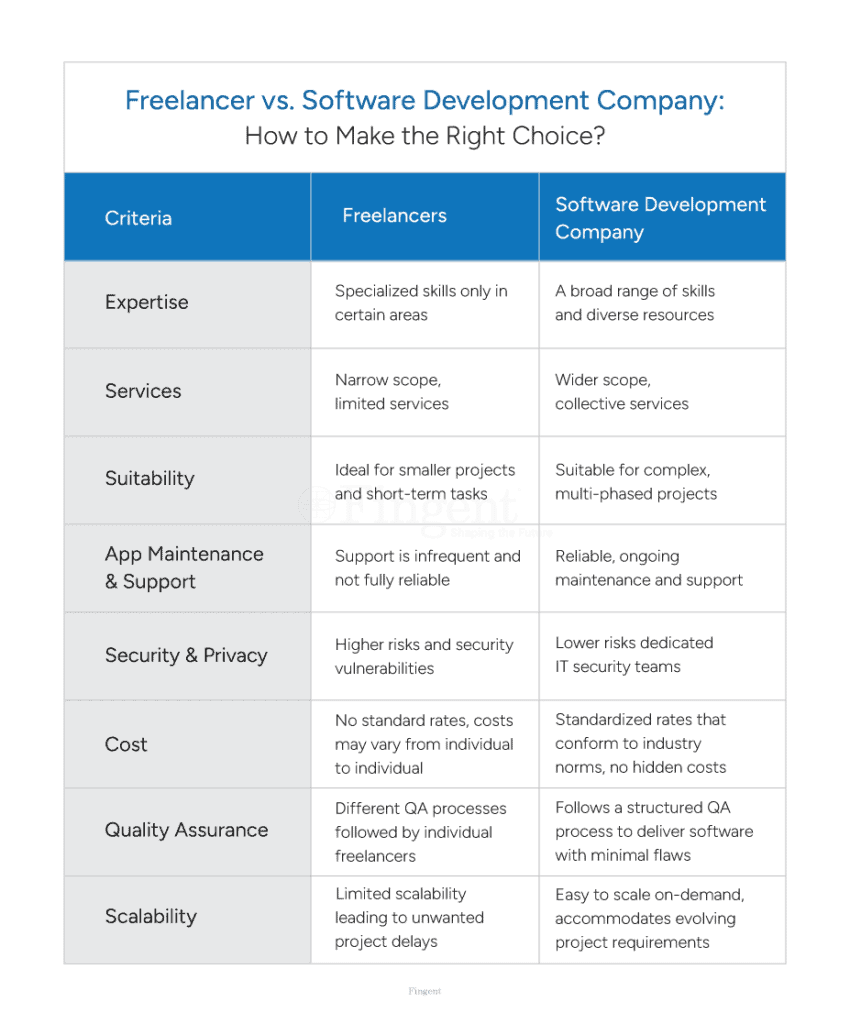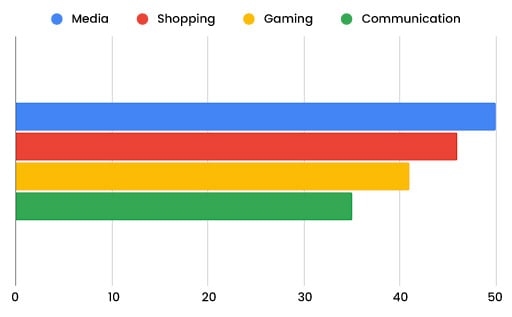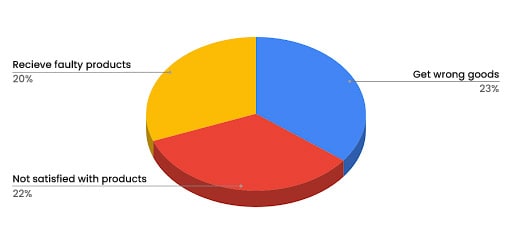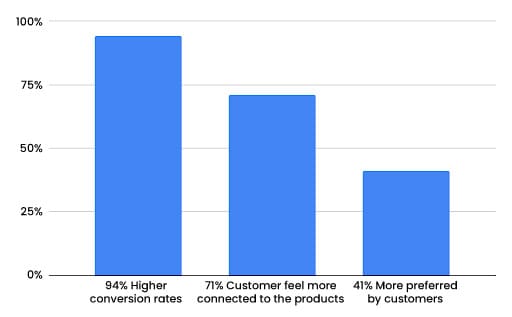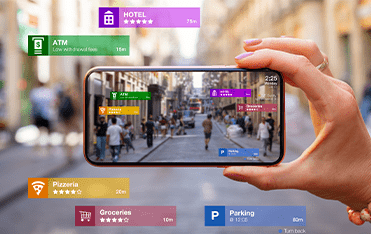For more than a decade, businesses in all industries have undergone a digital metamorphosis. This evolution is marked by a transition from on-premises software solutions to cloud-based computing technology.
By leveraging cloud-computing resources, businesses can gain access to scalable assets, increase organizational performance, and optimize digital agility.
It’s a mistake to think about cloud solutions primarily as software-as-a-service (SaaS) applications. While these technologies are a valuable component of business modernization, they’re only the tip of the iceberg.
Businesses that create their own cloud-native applications can truly harness the power of discrete cloud technologies to deliver long-lasting competive advantages. As their name implies, cloud-native applications are “native” to the cloud computing environment. In other words, cloud-native software development involves creating applications in components optimized for deployment in the cloud instead of a physical computing environment.
What Is Cloud-Native Development?
In simple terms, cloud-native software development is the process of creating applications using core cloud-computing principles and resources. The architecture of cloud-native applications is highly scalable, responsive, and dynamic.
Cloud-native applications are designed to be deployed and run in cloud computing environments, and as such, they offer a number of benefits to developers. Some of the advantages of developing cloud-native applications include:
- Scalability: Cloud-native applications can easily (and often automatically) scale up or down to meet changing demand with consistent performance levels, making them well-suited for applications with fluctuating usage patterns.
- High availability: Cloud-native applications can be designed to be highly available, meaning they can withstand failures and continue to function even in the event of a hardware or software failure.
- Elasticity and Agile development: Using independent microservices isolates the effects of changes, making it easier for developers to iterate on their products and respond to customer needs.
- Cost efficiency: By leveraging the economies of scale offered by cloud providers, businesses can reduce their infrastructure costs and invest in building and improving their applications.
- Integration with cloud services: Cloud-native applications can easily integrate with other cloud-based services, such as databases, messaging systems, and analytics tools, which can simplify development and improve the functionality of the application.
Overall, the main advantage of cloud-native applications is that they are designed to take full advantage of the capabilities of cloud computing environments, which can help developers build and deploy applications more quickly, efficiently, and at lower costs.
Additionally, many cloud-native applications are “cloud-agnostic,” meaning they can be run on a range of cloud providers (hyperscalers) or function in multi-cloud environments. Much of the appeal of cloud-native software development lies in the ability to yield adaptable and versatile applications. Sometimes applications can benefit from services that are only available from certain cloud providers, which risks “vendor lockin,” so it pays to consider the trade-offs carefully.
Read more: Can Moving to Cloud Native Improve Business Agility?
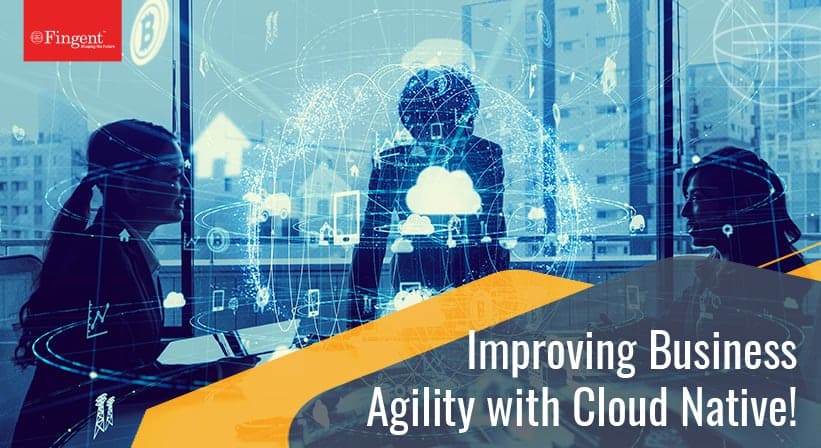
Why Modern Businesses Need Cloud-Native Development
Like on-premises computing resources, software created with traditional application-development practices are bound by the limits of that technology. As such, they can’t provide the quality of experience that modern audiences expect.
Additionally, applications developed in an old-school environment often need re-factoring to try to match the performance of cloud-native alternatives when the former is introduced to a cloud environment.
By leveraging cloud-native development services, modern businesses can facilitate their digital transformation on a faster time horizon. Cloud-native processes enable businesses to serve their customers better and deliver a frictionless user experience.
Top businesses in virtually all industries leverage cloud-native development. Those that neglect to do so will fall further behind these trailblazers and find it challenging to maintain a foothold within their respective markets.
Adopting cloud-native processes is no longer an optional step—it’s become necessary for businesses that want to thrive in the digital marketplace.
Top Benefits of Cloud-Native Software Development
Your business can tap into the multiple benefits of investing in cloud-native software development. Specifically, your organization can:
1. Streamline the User Experience (UX)
When the goal of cloud native is to develop applications that can serve your business while adjusting to the speed of changing technology, the end user is always the priority.
Because of the improved speed of development and the ability to make changes during the development process, cloud native puts UX first. While there are many ways to enhance the UX, investing in cloud-native development is one of the most effective approaches.
2. Improves Development Strategy
Cloud-native applications enable developers to leverage two essential UX-centric methodologies: continuous integration (CI) and continuous delivery (CD).
Continuous integration is the process of merging code changes using automation. Multiple developers can merge code changes into a centralized project to streamline app development and generate a cohesive, fully functional product.
Continuous delivery addresses post-release application software updates. Instead of occasionally pushing out massive updates, CD involves delivering smaller updates more frequently. This short-cycle approach improves software delivery and performance while yielding a super UX.
Moreover, microservices can be easier to implement with quality assurance automation, which elevates achievable levels of code quality.
3. Protect Business Continuity
Making dynamic, user-friendly applications a central part of your business model can give you a competitive edge in the modern marketplace. However, if your application goes down, customer frustrations will mount, and your brand could experience lasting reputational damage as a result.
Since cloud-native apps can tap into stand-alone, scalable cloud resources, these products are far less likely to experience extended outages due to spiking utilization. Developers can more rapidly isolate and remedy the issue, as well as rapidly test changes when a cloud-native app experiences downtime, thereby protecting business continuity.
4. Meet Evolving Demands for Services
In the digitized marketplace, it seems as if customers’ expectations and demands are in a constant state of flux. Unfortunately, it can be difficult — if not impossible — to pivot rapidly using legacy application development processes.
Cloud-native architectures can give your organization the agility it needs to respond to sudden shifts in customer expectations. For instance, you could add a new feature that enables customers to communicate easily with your brand. You could also frequently update your app’s capabilities to improve overall performance and stay relevant in the digital marketplace.
Read more: Cloud-Native Application Development: How It’s Powering App Delivery
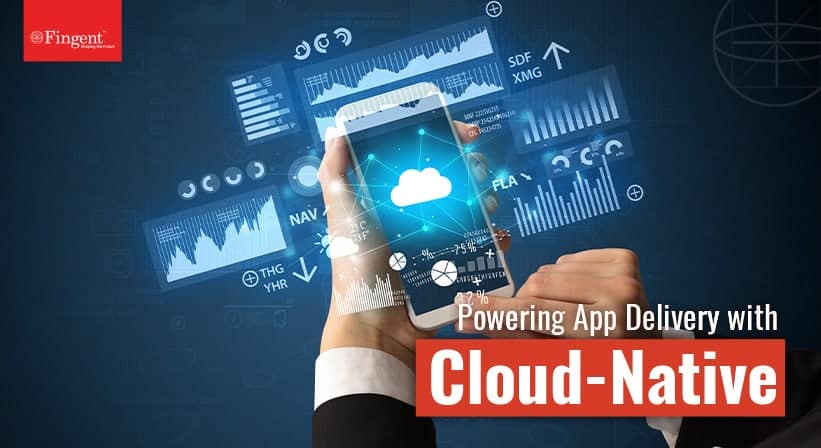
When Should Businesses Shift to Cloud-Native?
The short answer is “yesterday.”
In the long run, cloud-native software development outperforms traditional application development practices at every turn. Cloud-native development reduces risk, has broader scalability, and allows developers to make changes more quickly. Most notably, the speed of delivery is far and above one of the most compelling advantages of shifting to a cloud-native approach.
Your organization is undoubtedly using cloud-based computing resources in at least some capacity. You can complete the transition by modernizing your cloud-native development processes, too. Doing so will empower your business to regain a competitive edge within your respective industry.
At the same time, one should consider the downsides of cloud applications. Some cloud-native applications can be more complex than traditional applications, due to the need to integrate with multiple cloud-based services and manage distributed systems. This can create more opportunities for something to fail.
While cloud native applications can be cost-effective they can also be more expensive than traditional applications in certain situations, particularly if they require a large number of resources or if they have high usage patterns.
The Nexus Between Cloud-Native Development and Business Modernization
Today’s customers want the freedom to interact with brands across multiple touchpoints. This holds true whether your target audience consists of individual consumers or business-to-business (B2B) clients.
Modern businesses live up to this customer expectation by providing their clients access to user-friendly, intuitive, and dynamic applications. These organizations can expand their reach in the digital marketplace, connect with a broader audience, eliminate friction from purchasing processes, and generate more revenue, all by transitioning to cloud-native development.
Conventional, monolithic application development practices often present a significant hurdle to large-scale integrations, digital transformation and business modernization efforts. Your business can’t achieve its digital transformation goals without fully embracing the cloud-computing environment and its many resources.
Examining the Business Impact of Cloud-Native
The notion that cloud-native software development is the new gold standard isn’t just pure conjecture. This fact is supported by numerous case studies and research projects, including a recent business impact brief by 451 Research.
In the brief, the organization’s team reported that:
- 64% of companies develop at least half of their applications using cloud-native technology
- 49% of companies have partially or fully adopted Kubernetes
- 55% of companies have partially or completely adopted containers
451 Research analysts concluded that cloud-native software development has gone beyond the development process and evolved into a full-fledged methodology. As such, it should continue gaining momentum among brands passionate about actualizing digital transformation.
And that’s just the barest overview. Managers can review 451 Research’s business impact brief by downloading the report.
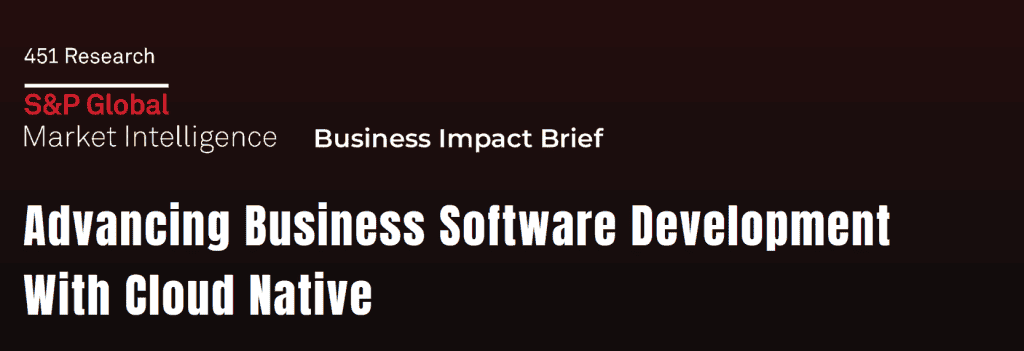
Why Choose Fingent for Cloud-Native Development?
Fingent’s suite of cloud-native software development services is designed to deliver maximum value to our clients. When leveraging Fingent’s cloud-native development services, your organization will experience:
- Consistent, High-Quality Results: As a client-oriented cloud-native development firm, Fingent focuses on providing high-quality, consistent results that exceed expectations. Our robust, agile teams and dynamic quality assurance practices ensure that our deliverables expressly meet your needs and address your most significant organizational pain points.
- Best-of-Breed Solutions: Fingent’s unique approach enables us to provide world-class cloud-native software development services that produce best-of-breed solutions. These cost-effective solutions will align with your budget and delivery timetable. With Fingent, you won’t have any last-minute surprises like budgeting issues or missed deadlines.
- Prebuilt Services: Fingent’s talented team can build truly custom solutions for your organization. However, we can also expedite development by leveraging prebuilt frameworks, applications, and microservices for common functions that are a staple of virtually all industries. Some of these prebuilt services include cognitive AI, shipment, and payment service functions.
- Pay-as-You-Go Models: With Fingent, you can transition away from speculative technology spending — that is, purchasing new machines and acquiring more infrastructure in anticipation that you will succeed. While it’s important to believe in your business and plan for its success, tying up resources on unneeded equipment for months or years will only harm your bottom line. But Fingent enables you to break the cycle of speculative spending and rely more on operational expenses (OPEX). Instead of letting new hardware gather dust in the data center until its eventual use, you can access additional servers on-demand via a cloud-native infrastructure.
- Scalability: As your business grows, you must have the flexibility to support additional users at a moment’s notice. However, scaling IT capabilities can too time-consuming, and costly if you are limited by monolithic software architectures.Take advantage of Fingent’s expertise to create your cloud-native capabilities that are able to support more users in more locations, all while accommodating a dynamic array of devices.
- Speed of Delivery: Fingent can help you stay on top by providing an expedited speed of delivery via cloud-native solutions. Skip the need to field a development team with the right mix of skills but assigning your project to Fingent. We facilitate an accelerated speed of delivery by shifting away from a “big bang” approach to project management when practical and instead focusing on achieving meaningful milestones across the project’s development life. We have the deep bench of personnel needed to keep projects moving ahead at the optimal speed.
- Transparent Project Management: At Fingent, we always keep our clients in the loop. We’ll routinely provide you with updates regarding the status of your cloud-native development project. We pride ourselves on setting firm deadlines and adhering to them.
If you’re ready to achieve business modernization and make your organization a standout player in your industry, take advantage of Fingent’s cloud-native services. Contact us to discuss your latest project.













